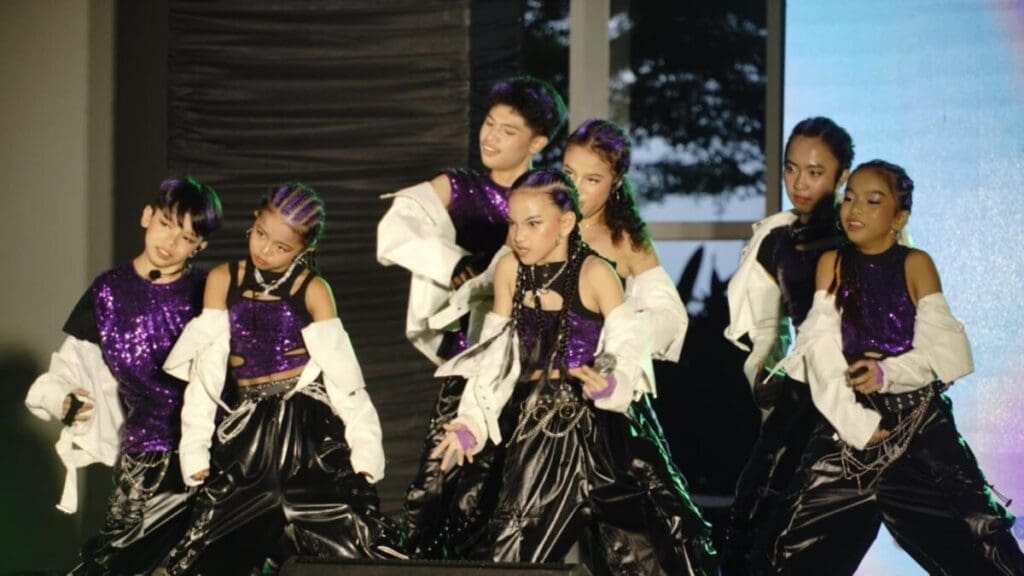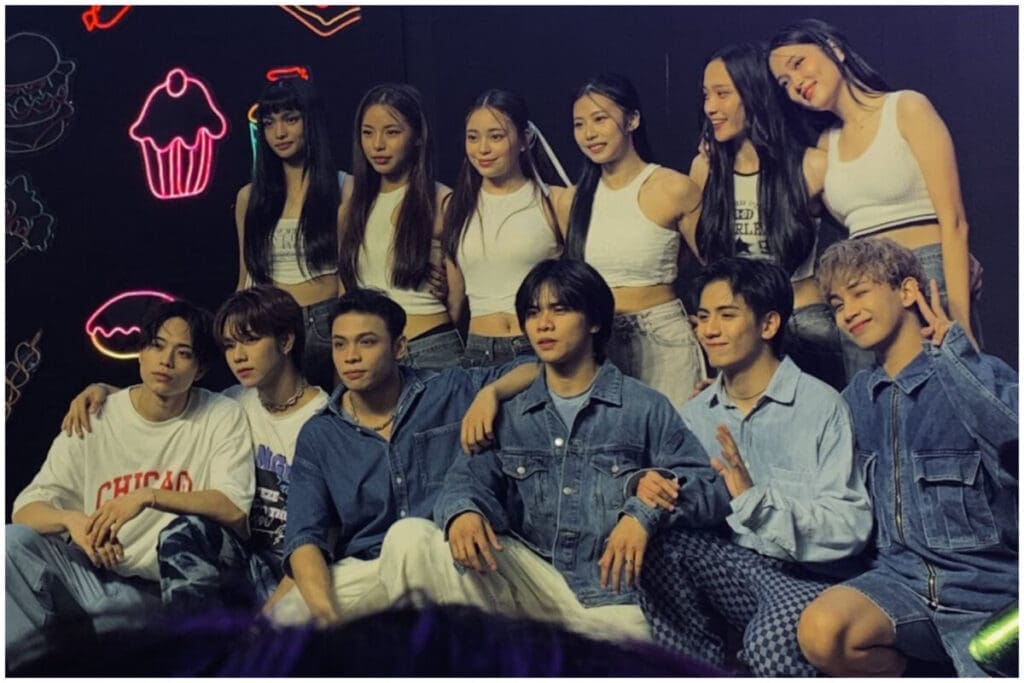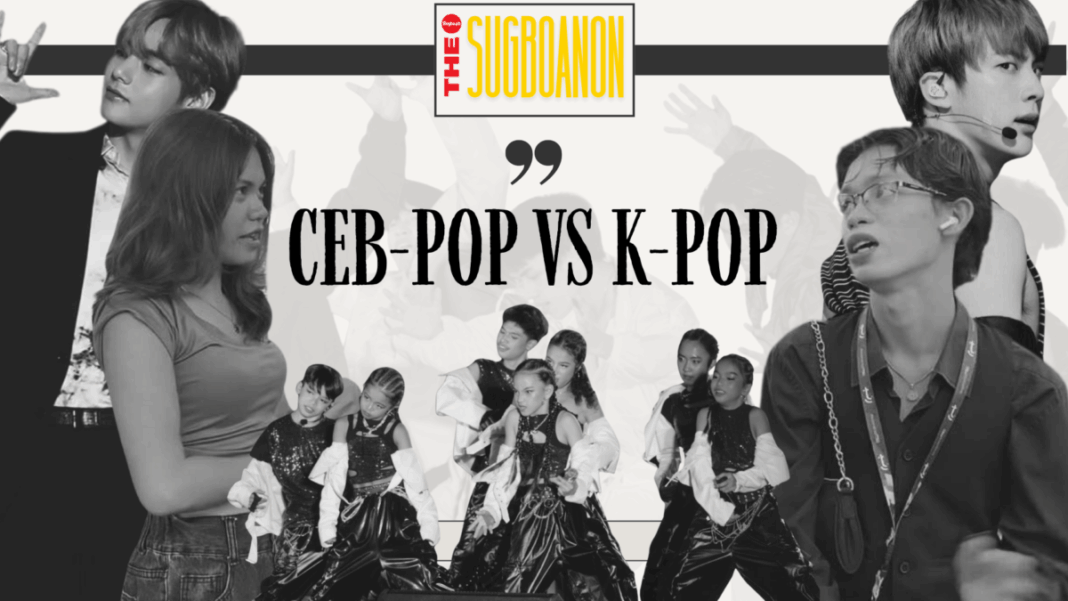We can celebrate both, as long as we don’t forget who we are.
The K-pop wave has evolved beyond music into a force that is reshaping our fashion, language, and even social behavior. In Cebu, where the streets once played Cebuano ballads and OPM, this generation of playlist is now a mix of music jams from different countries. As these influences continue to dominate the sound in our earbuds and the beauty standards in Korea that shape our local aesthetics and even our fashion, are we losing our distinct traits that make us distinctly Sugboanon?
The tension between local and global trends is not a new phenomenon, but it continues to highlight the distinct challenges associated with each. As past foreign influences arrived through colonization or trade, cultural exchange can now happen with just a tap of your fingers through your smartphones. This raises a question about preservation, uniqueness, and adaptation. Cebu’s heritage in BisRock, Vispop, and the Sinulog rhythms now share space with other foreign influences, primarily when the synchronization in the K-pop industry arises, which demands balancing the appreciation of art with a splash of authenticity.

Sugbo Speaks Up: Can You Say Bias in Bisaya?
The Sugboanons revealed their perspective about their stand as the influences left a mark on us. One Sugboanon named “ Jacky” is a fan of BTS. He had previously shown his fascination with K-pop, particularly its glamour and high-quality songs and videos. He said, “Before, yes, but right now I’ve noticed that there are changes,” and “a lot of groups are outside right now, like the SB19.” Still, later on, he saw the improvement in our industry that resurfaced the pride of being a Filipino/Sugboanon, which points to our Pinoy pride, as seen in SB19, that can compete globally while still maintaining and keeping our roots alive. As he said, “Before, most people were focusing on Koreans when BTS and Blackpink came out, but right now I can see that the Filipinos are outstanding already.” This implies that our competition in the global market is currently outstanding, unlike before, when we were shadowed by the fame of K-pop and its popularity.
Ceralie, another respondent who is a fan of Itzy and Tomorrow By Together (TXT), framed the history of our country before as “we are influenced to begin with,”. Later on, it highlights that identity is not about vanishing or keeping it lost, but rather, with these global pop trends, they serve as a reflection and amusement for our local creativity. “Those influences help us be more creative and be more diverse, I think mao na ang nakahulma saatua as a Filipino”, the statement follows these influences as a tool that shaped our identity up till this day. The perspective of Sugboanon is rooted in the improvement and history of our culture, which makes our local music unique to us.

OG Cultural Crossfade
Cebu’s cultural identity has always been dynamic, shaped by centuries of exchange with diverse influences. Long before K-pop gained mainstream popularity, the province’s artistic traditions had already been enriched by interactions with Malay traders, Spanish missionaries, and American educators. Each wave of influence left its mark while local creativity adapted these elements into something distinctly Cebuano. Studies of Philippine cultural evolution show how foreign ideas have consistently been reinterpreted through a Filipino lens. This same transformative process continues today with K-pop. Rather than simply imitating Korean trends, young Sugboanons are putting their spin on them by mixing Korean pop aesthetics with Bisaya humor in viral videos or blending K-pop’s production styles with heartfelt Visayan lyrics that locals can relate to. Our history proves that cultural borrowing doesn’t weaken identity when it’s actively reimagined through local perspectives.
Bisaya Beats Hit the Streets
To recognize and amplify the voices of the locals, Cebu City took action to ensure the preservation and appreciation of sariling atin. The landmark Ordinance 2780 mandates that cafes, malls, and transport terminals dedicate 30% of airtime to Bisaya music, which is both practical and symbolic. Local artists will receive fair treatment under the law, which makes Sugboanon culture an integral part of daily life. The ordinance does not include any punishments, but it offers economic incentives, which include tax breaks for the following businesses. Proposed incentives, such as tax breaks, have been discussed. This demonstrates how cultural policy can be both smart and economical. With the help of streaming platforms, it now creates a “Bisaya Hits” playlist to help with the demand. The preventive measure shows how we can help local art compared to those in the globalized market.
Oppa-sition and Identity
The most compelling case for cultural optimism comes from observing how global fandoms operate. Studies of K-pop communities in Southeast Asia reveal a paradox: the more fans engage with Korean content, the more they crave local equivalents. This explains the rising popularity of groups like SB19, whose “P-pop” style adapts K-pop’s precision but centers Filipino narratives.

Both Sides of the Soundtrack
Safeguarding the Sugboanon identity demands collective effort from all sectors of society. For people who enjoy music, actively streaming Cebuano artists and requesting local music at cafés, gyms, and shopping centers, every play counts in boosting the visibility of these artists. Creators have a unique opportunity to experiment with cross-cultural collaborations, perhaps blending Cebuano lyrics with K-pop’s infectious beats or traditional Visayan instruments with modern production techniques. Policymakers must go beyond the 30% mandate by investing in cultural infrastructure dedicated to music venues, school programs that teach Visayan composition, and grant opportunities for emerging artists. Meanwhile, fans can harness the same organizational skills they use to trend K-pop hashtags to amplify homegrown talent, turning fan armies into local music fandoms for Cebuano creators. The goal isn’t to reject global culture but to ensure Sugboanon voices thrive alongside it. History and cultural studies consistently show that vibrant artistic scenes don’t emerge from isolation. Still, by absorbing outside influences while strengthening local distinctiveness, Cebu is uniquely positioned to achieve a balance between the two, allowing it to enjoy both local and global recognition.
From the unique sound of K-pop to our blend of taste that locals love, Cebuano/Sugboanon music has constantly been evolving without losing the essence of what makes us, us. The current moment offers an opportunity to leverage global platforms that showcase our local creativity. When enjoying K-pop or other Western music tracks on their playlist, it is not a cultural surrender, but rather a Sugboanon identity asserting its place in the connected world. Our playlist may be global, but the beat in our heartbeat remains as Sugboanon.

